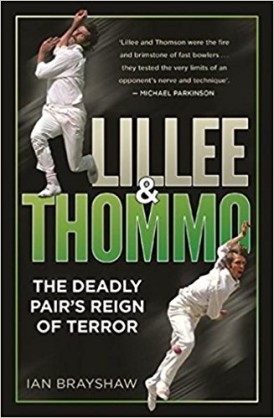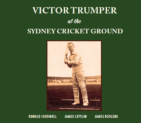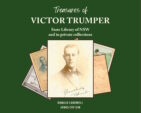Lillee & Thommo
Archie Mac |Published: 2017
Pages: 272
Author: Brayshaw, Ian
Publisher: Hardie Grant
Rating: 3 stars

Ashes to Ashes….dust to dust…
if Thommo don’t get ya…Lillee must…
Dennis Lillee and Jeff Thomson are the most famed and feared opening bowling combination in cricket history. They first joined forces during the 1974/75 Ashes series and were so destructive and dangerous they hastened the development of the batting helmet, not to mention all of the other protective accoutrements now considered de rigueur for the modern batsmen.
Author Ian Brayshaw is eminently well placed to write their story. A contemporary of both men, he played alongside Lillee for Western Australia and faced Thomson at his quickest when WA played Queensland. Brayshaw was a quality all rounder and modestly relates the fact that he once hit Thomson for consecutive sixes.
Brayshaw, apart from his own knowledge of the bowling duo, has interviewed just about everyone involved in the era. Those interviewed include both Lillee and Thomson, players from around the world, contemporary journalists and even umpires.
The interviews are the real heart of the book and, even though they are quoted in the past tense, convey a feeling of immediacy. You come away with an understanding of what it was like to face Thomson at his frightening best, and the thorough examination of a batsmen’s technique when opposed to Lillee.
The book is split into three parts. The first part is the longest and deals primarily with the 1974/75 Ashes series that saw Lillee and Thommo come to the fore. The initial shock of the English batsmen at the raw speed of Thommo in particular makes for gripping reading. It seems the English on arrival in Australia thought they would have the advantage in fast bowling. The English expected Lillee, who was recovering from a career threatening back injury, to bowl at a reduced pace. They also mistakenly believed the reports on Thomson’s pace to be good old fashioned Aussie embellishment.
During the first Test in Brisbane the Englishmen appeared to have been in shock, with only the indefectible Tony Greig taking the Aussies head on. Greig would signal his own boundaries and had the audacity to bowl bouncers at Lillee.
Brayshaw records the response of the other English batsmen to Greig’s histrionics, which confirms they were probably a beaten side after just one Test. They give the impression that it was more about survival rather than run scoring.
It’s not surprising it was all about survival with Thommo making the ball jump throat height from just short of a good length, a number of the Englishman suffering broken bones. Unprotected fingers and ribs were the most common fractures recorded.
The second part of the book deals with the West Indies 1975/76 tour of Australia. The Windies arrived as the heirs apparent and left with their tails between their legs. The Windies were soundly beaten on the score board and in the fast bowler stakes too. Again Thommo and Lillee were simply too quick and intimidating for the mostly young West Indies team to cope with.
The third part of Lillee and Thommo, is mostly a treatise on where Dennis Lillee and Jeff Thomson fit into the history of fast bowlers. Brayshaw makes a strong argument that Lillee is just about the finest fast bowler in history, and that Thommo was the fastest bowler ever.
The author also provides an understanding of the different approaches of Lillee and Thomson to fast bowling. Lillee was full of plans for each batsman based on an encyclopedia like memory of past encounters and Thommo “I just shuffle up and go WHANG”.
Brayshaw is mostly on the side of the bowlers although he does include some interesting quotes from NSW and Australian paceman, David Colley, who is censorious of Thomson. He criticises Thommo after he failed to visit a Sydney Grade player in hospital after he seriously injured him with a bouncer.
So if you’re sitting back and enjoying the Ashes this summer, watching the bowlers bounce batsmen who resemble the Michelin man spare a thought for the poor batsmen of the 1970s, who faced arguably the greatest pace combination in history with nothing more than a soap dish for a protector and some inadequate rubber gloves.
Lillee & Thommo, is a quality book and should be read by all cricket lovers.






Leave a comment